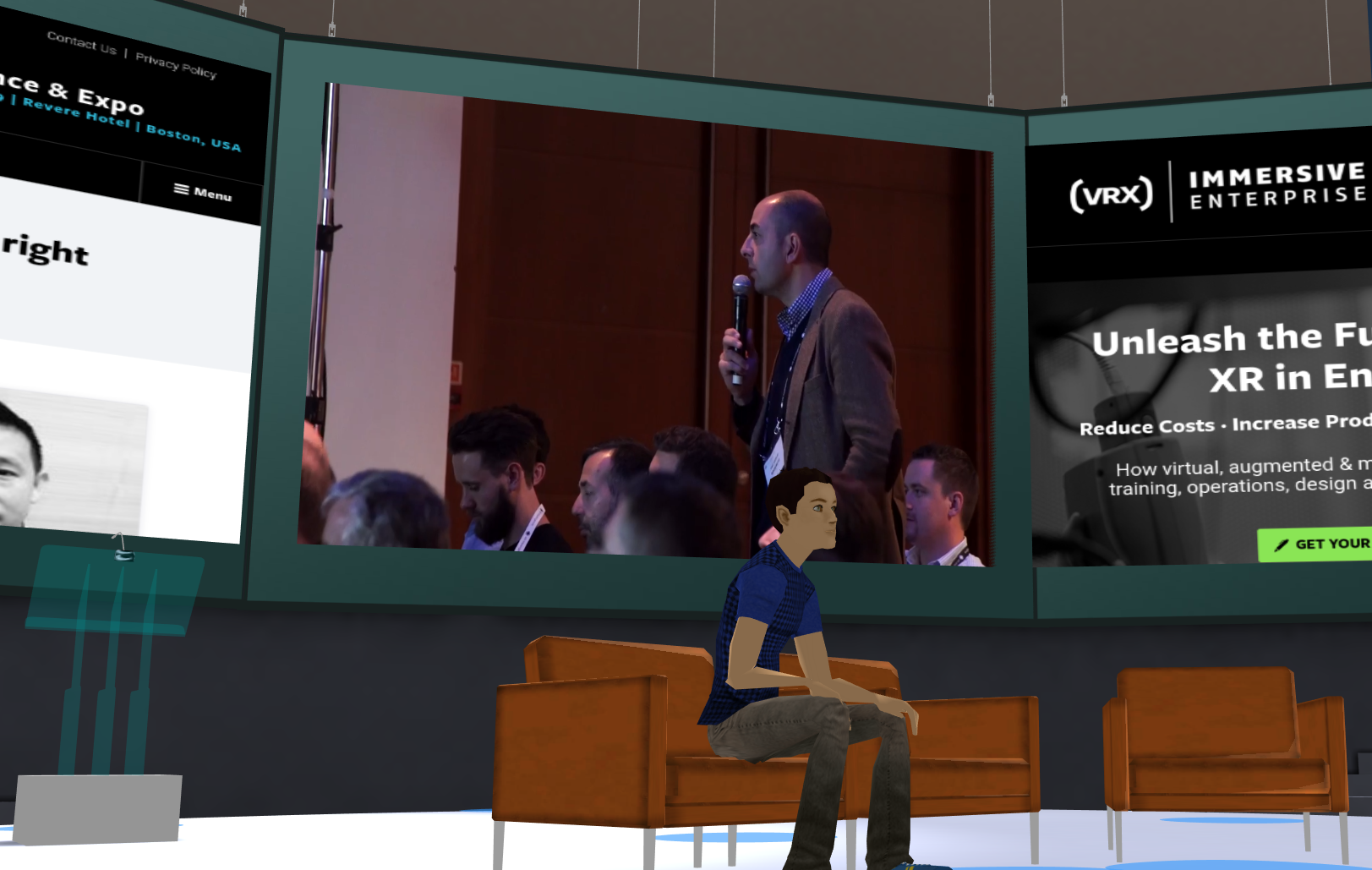With so many virtual trade show platforms, selecting the right one can be challenging. Choosing the right virtual trade show platform can be difficult, with many options. To help you out, we’ve researched and compiled a list of the top 10 best virtual trade show platforms that offer various features for creating successful digital events. From cost & pricing models to setting up and using your chosen platform effectively, this guide will provide all the information needed to select the right virtual tradeshow platform for your needs.
Table of Contents:
- How to Set Up and Use a Virtual Trade Show Platform Effectively?
- Cost & Pricing Models for Different Types of Virtual Trade Shows
- FAQs about Best Virtual Trade Show Platforms
- Conclusion
How to Set Up and Use a Virtual Trade Show Platform Effectively?
Setting up and using the best virtual trade show platforms effectively requires careful planning, preparation, and execution. Before launching your virtual event, you need to determine the type of platform that best suits your needs. Consider budget, ease of use, scalability, customization options, security features, analytics capabilities, and customer support. Once you have selected the platform best suited to your event, it’s time to begin configuring it.
Identify the appropriate platform for your virtual event, considering usability, scalability, customization options, security features, analytics capabilities, and customer support. Consider usability, scalability, customization options, security features, analytics capabilities, and customer support. Once you have decided on a platform provider, create an account if necessary, then customize any settings needed for smooth operation during the event. This includes configuring registration forms or other data collection methods; setting up payment processing; creating user accounts; designing page layouts, adding content (videos/images/etc.); scheduling activities (live sessions/breakouts); enabling communication tools like chat boxes or forums; integrating third-party apps or plugins; testing all functions before go-time, etc. Ensure you are well-versed in all available tools so you can rapidly answer questions from attendees during the live event and provide technical assistance when needed.
Once everything is set up correctly for your virtual trade show, it’s time for launch day. Make sure that participants know how they can access their accounts on the day of the event – this could be through email invitations sent in advance or simply providing them with login details at check-in time – whatever works best for you and your team. Finally, make sure everyone knows what will happen during each session, including who will be speaking and what topics will be covered, so they can prepare by researching, if required, before logging into their accounts on launch day itself.
Setting up and using a virtual trade show platform effectively is essential for event industry professionals who want to produce successful events. To maximize the potential of your virtual trade show platform, there are several steps you should take.
First, choosing the right virtual trade show platform for your needs is essential. When selecting, consider cost, features offered, scalability options, ease of use, customization capabilities, and customer service support. Once you’ve identified the right platform, ensure it has all the necessary features to provide a captivating experience for visitors.
Once you’ve chosen a virtual trade show platform that meets your requirements, it’s time to start setting it up. Start by creating a branded website or landing page with information about your event and registration forms so people can sign up quickly and easily. If relevant to your event, you may also want to include additional pages like FAQs or sponsorship opportunities on this site. Additionalltomake sure, any links in emails or other promotional materials point back to this page, so visitors can access more information about the event they are attending.
Once you’ve determined the virtual trade show platform that best meets your needs, it’s time to get into the details and configure all necessary settings. Customize branding elements such as logos and color schemes to reflect both yours and those of partners involved in hosting/sponsoring, along with adding session descriptions & agendas, which will help guide attendees through their experience at each stage throughout their visit(s). Additionally, set up ticketing systems & payment gateways so people can purchase tickets online before arriving at the venue (or virtually) if needed. Don’t forget to create a branded website or landing page with information about your event and registration forms so people can sign up quickly and easily – making sure any links in emails or other promotional materials point back to this page for easy access. With these critical steps completed, you’ll be ready to run a successful virtual trade show.

It would be best if you also planned how best to optimize attendee engagement during an online tradeshow by preparing interactive content such as polls or quizzes before launch day, ensuring all sessions feature audio-visual components, leveraging social media channels (i.e., Twitter hashtags) & utilizing digital tools like chatbots where possible – these can be used throughout both pre-event promotion activities & post-show follow ups too. Also, consider how networking could occur between participants, e.g., in video conferencing rooms / private messaging systems, etc., depending on what type/level of access rights each person has been granted beforehand.
Finally, ensure that everything is tested thoroughly before going live. This includes technical aspects of streaming quality assurance tests and all elements associated with attendee interactions via any technology. Additionally, consider anything related to running a successful tradeshow inside the metaverse or in physical space. By following these steps carefully, you can ensure success when setting up and using a virtual tradeshow platform effectively.
Setting up and using a virtual trade show platform effectively is critical to creating successful events. There are several steps to take when setting up and using a virtual trade show platform and tips for optimizing its use.
When setting up the virtual trade show platform, it’s important to consider features such as registration, networking opportunities, interactive content options, audio/video streaming capabilities, analytics tools, payment processing systems, etc. The best platforms will have all these features in an easy-to-use interface tailored to your event’s needs. It’s also essential to ensure the security of your data by selecting a provider with robust encryption protocols in place.
Once you have identified the platform that best fits your event needs, it’s time to get down and dirty with configuring settings such as ticket types or access levels; customizing branding elements like logos and colors; uploading documents or other content; building out user profiles; setting up payment processing options; testing audio/video streaming capabilities; adding exhibitors or sponsors if necessary; sending out invitations with links or codes for accessing the platform on different devices (desktop computers, laptops tablets, etc.); tracking registrations via email notifications or automated reports generated by the system itself; and providing customer support during pre-event setup stages. With all these ducks in a row, you can be sure your virtual trade show will run smoothly. Keywords: configure, customize, upload, build out user profiles, set up payment processing options, test audio/video streaming capabilities add exhibitors send out invitations, track registrations, provide customer support.
Instruct attendees on navigating through various sections within the system, such as locating speakers’ sessions. Offer assistance via chatbots or customer service agents where possible and create “icebreaker activities” that help foster interaction between participants before delving into the main topics discussed at the event. Keep an eye on real-time analytics data related to user engagement throughout all stages of an event (pre-, mid-, post-) to pinpoint areas needing improvement next time. Utilize gamification techniques like leaderboards, awards, badges, etc. Finally, save recordings from each session so you can share them afterward. Keywords: provide, offer, create, monitor, leverage, save
By following these steps and leveraging the optimization tips outlined above, professionals working within the event industry should be able to utilize any virtual trade show platform successfully.
With the proper knowledge and tools, setting up and using a virtual trade show platform can be done effectively. Now let’s look at cost & pricing models for different types of virtual trade shows to determine which is best suited for your event needs.
MootUp offers a range of evergreen experiences designed to captivate and engage attendees while generating leads for sponsors effortlessly. With “always-on” events, attendees can enjoy continuous content and engagement, creating a dynamic and engaging environment that keeps them coming back for more.
Key Takeaway: When planning and running a successful virtual tradeshow, choosing the right platform that fits your budget, needs, and scalability options is essential. Set up all necessary settings, such as branding elements, ticketing systems & payment gateways, before launch day. Plan how to optimize attendee engagement during an online tradeshow through interactive content, networking opportunities, or leveraging social media channels. Finally, test everything thoroughly beforehand to hit the ground running on go-time.
Cost & Pricing Models for Different Types of Virtual Trade Shows
Cost and pricing models for virtual trade shows can vary greatly depending on the type of event being hosted. Realizing the distinctive cost and pricing plans is critical to guaranteeing you get the most out of your expenditure.
Various cost and pricing plans for virtual expos, such as flat-fee, pay-per-use, subscription, or custom bundles. Flat-fee models typically involve a one-time fee for access to all features available with the platform. Pay-per-use models charge users based on usage time or the number of attendees at an event. Subscription plans usually require a monthly or annual payment in exchange for access to specific features within the platform. Custom packages may be tailored to meet individual needs by combining various services from multiple vendors into one package deal.
When evaluating different cost and pricing approaches, numerous variables should be considered, such as scalability, budget limitations, available features, customization opportunities, and user experience expectations, to decide which model is most suitable. Flat fees offer maximum flexibility since they do not tie you into any long-term commitments; however, they often lack certain features that may be necessary depending on the size and scope of your events. Pay-per-use models allow more control over costs but can become expensive if there is high usage demand during peak times, whereas subscription plans provide access to advanced features but come with recurring payments; they should only be considered if there is a constant need over time. Lastly, custom packages can offer great value when explicitly tailored towards your particular needs but require more effort upfront due diligence researching vendors providing convenient services. This could add up quickly without careful consideration, given their bespoke nature.
Key Takeaway: When comparing cost and pricing models for virtual trade shows, it’s important to weigh factors such as scalability, budget constraints, and desired features. Flat fees offer maximum flexibility but lack certain features; pay-per-use can be expensive if there is high usage demand; subscription plans provide access to advanced features with recurring payments; custom packages are tailored specifically toward your needs but require more effort upfront of research.
FAQs about Best Virtual Trade Show Platforms
What is your ideal virtual event platform for a virtual trade show?
My ideal virtual event platform for a virtual trade show would be comprehensive, user-friendly, and secure. It should provide features such as an interactive 3D environment with realistic visuals, intuitive navigation tools to help attendees explore the venue easily, custom branding options to give organizers complete control over their events’ look and feel, support for multiple payment methods so guests can purchase tickets without any hassle or delays, powerful analytics tools to measure the success of each event in real-time, and reliable hosting services with 24/7 customer service. To ensure the safety of data, robust security measures should be implemented.
What are the pros and cons of virtual trade shows?
Pros of virtual trade shows include cost savings, increased reach and access to a larger audience, no need for travel or physical space rental, improved flexibility in terms of event timing and duration, and enhanced engagement through interactive features such as live chat rooms and webinars. Additionally, digital surveys and analytics tools can collect data more efficiently.
Cons of virtual trade shows are that they require technical setup, which may incur additional costs; the lack of face-to-face interaction could lead to lower networking opportunities; there is also potential for security risks due to cyber threats if proper measures are not taken. Finally, attendees may find it challenging to focus on presentations without the personal touch offered by an in-person event.
What is the main benefit of a virtual trade show?
By leveraging virtual trade shows, event industry professionals can build interactive experiences to engage audiences worldwide without costly travel and with more scheduling flexibility. This allows event industry professionals to create engaging experiences that can reach audiences worldwide. Virtual trade shows offer a cost-effective alternative to traditional event production and hosting while allowing for greater scheduling flexibility. Additionally, analytics from these events provide valuable insights into customer behavior, which helps inform future marketing strategies and product development efforts.
How do you organize a virtual trade show?
Organizing a virtual trade show requires careful planning and execution. Decide the event type and desired outcomes for your virtual trade show to ensure successful execution. Then create an engaging agenda with exciting topics that will draw attendees in. Next, select a no-code platform for hosting your event virtually in the metaverse, ensuring it has all the necessary features like registration forms, live streaming capabilities, interactive sessions, and more. Finally, promote your event through various channels to ensure maximum reach before launching it successfully.
Conclusion
Choosing the best virtual trade show platforms for your needs can be daunting. However, by doing your due diligence and assessing each platform’s features, cost, ease-of-use, and scalability options, you can find the right fit for your needs. Consider price, features, ease of use, and scalability when making this critical decision. With the right virtual tradeshow platform in place, you will have an efficient way to host successful events online or hybrid.
MootUp’s browser-based platform is the ideal solution to “futureproof” your event tech stack. It enables access on all devices, including smartphones, tablets, laptops, and VR/AR headsets, without downloading or installing software.
Try MootUp, the no-code platform that makes producing and hosting virtual and hybrid events in the metaverse easy. Get started today with our robust suite of tools for creating a unique trade show experience!

